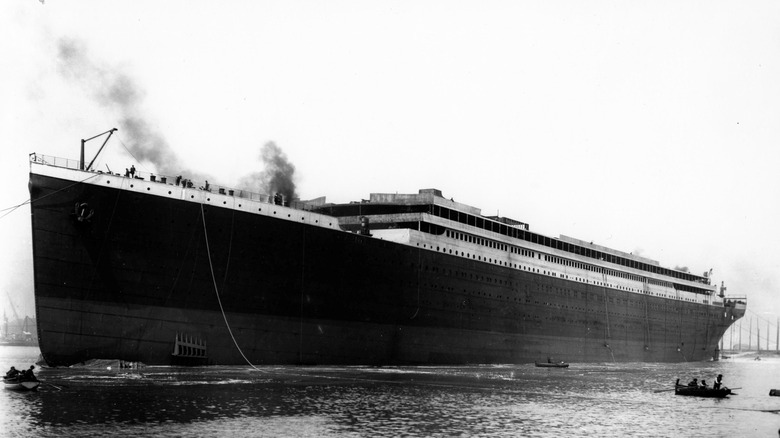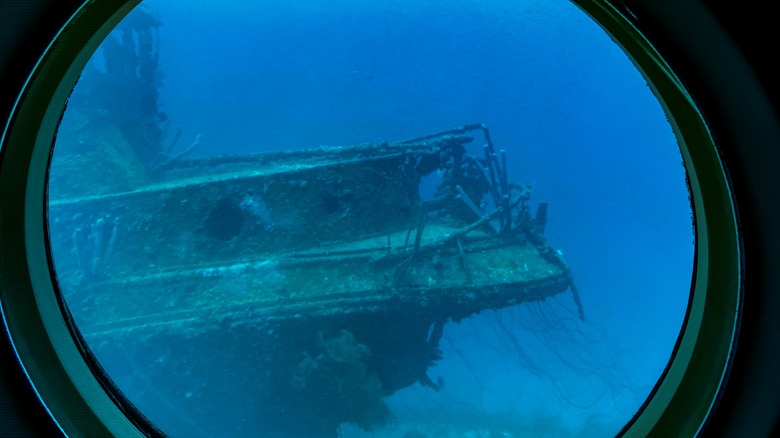How Many People Have Been To The Titanic Wreckage?
When the Titanic set off on its maiden voyage in 1912, 111 years ago, no one on board could have predicted the legacy the ship would leave behind. When the Titanic struck an iceberg off the coast of Newfoundland and sank — 1,503 people died — 815 passengers and 688 crew, as Royal Museums Greenwich says. History writes that 706 survived. The breakdown of deaths among classes of passengers, genders of passengers, and types of staff is telling and disturbing. Sixty-one percent of first-class passengers survived, while 25% of third-class passengers survived. Twenty percent of male passengers survived, while 75% of female passengers survived. No ship engineers survived, as they gave their lives buying time for everyone else to leave. All in all, given the scope and drama of the event, it's no wonder that the sinking of the Titanic continues to capture the imagination.
The sinking of the Titanic is also something of a mystery. The ship's wreckage wasn't even discovered until 1985, 73 years after it sank, as part of a secret Cold War Navy mission, per National Geographic. Since then explorers, researchers, and the curious have ventured out to the Titanic to try and learn more. In 2023, Magellan Ltd. rendered "every millimeter" of the wreckage in a 16-terabyte 3D model, per The New York Times. That mission deployed two submersibles — Romeo and Juliet — with manned crews. As Time says, those individuals join less than 250 total people who've visited the wreckage.
[Featured image by Bain News Service via Wikimedia Commons | Cropped and scaled | Library of Congress Prints & Photographs Division]
Researchers, reporters, and James Cameron
The first person to visit the Titanic in person after it sank was Robert Ballard in 1985, an oceanographer at the University of Rhode Island and National Geographic Society explorer-in-residence. As National Geographic reports, Ballard approached the U.S. Navy with a proposal to build a robotic submersible capable of embarking on the mission to discover the Titanic. The Navy was interested in the technology involved in the venture, agreed to it, and Ballard got lucky on the voyage. By following a trail of heaviest-to-lightest debris broken off from the Titanic as it was sinking, he was able to trace a path to the wreckage. He got the coordinates of the ship at a staggering 13,000 feet deep and 400 nautical miles off the coast of Newfoundland, and others have followed in his wake.
It's mostly researchers who've visited the Titanic, and those connected with expedition companies. Oceanographic Magazine says that EYOS Expeditions visited the Titanic in 2019, a full 14 years after the last time anyone visited in 2005. In 2000 the NY Post says that reporter and physicist Michael Guillen visited the craft, took some notable pictures, and barely made it out alive after a collision with one of the Titanic's propellers. And then of course there's James Cameron, whose 1997 film "Titanic" permanently cemented the tragedy of the ship's sinking in public consciousness. The Daily Mail says that his all-consuming preoccupation with the Titanic led him to dive down to the wreckage 33 times.
Risky business
On June 17, 2023, a submersible from OceanGate Expeditions — the Titan — spearheaded the most recent journey down to the sunken Titanic. It vanished on Sunday, June 18. And yet, the public might not realize that the venture was a bit different from previous ones. OceanGate founder Stockton Rush, who on the NY Post said that he didn't hire people with "military experience" to control the Titan because they weren't "inspirational." Rather, he glibly said that "anybody can drive the sub" with a $30 video game controller. He was piloting the vessel. The other four passengers include a Pakistani father and his 19-year-old son, a British businessman and adventurer, and a French Titanic expert who is the director of underwater research for the American company RMS Titanic, Inc. and has gone to the Titanic wreckage 37 times previously, according to E/M Group.
In fact, OceanGate's current mission is one of a string of Titanic tourism visits — each person on board the Titan paid $250,000 for the journey. Mike Reiss, who took part in last year's underwater tour of the Titanic, says on Insider that he knew he was risking his life by diving down 13,000 feet below the waves. On the Daily Mail, James Cameron — the veteran of veterans of Titanic visits — warned everyone else of the dangers of the trip. The wreckage site is "one of the most unforgiving places on earth," he said. "It's not like you can call up AAA to come get you."


